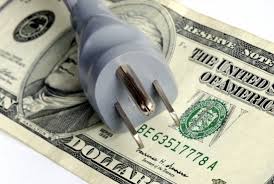
If you’re a typical family, you spend about 33 percent – about $17,000 per year – of your income on housing. That doesn’t mean just the mortgage or rent payment, but all of those related costs that are the natural result of living in a home.
Here are some tricks you can call on to reduce those costs.
1. Upgrade Your Appliances
It may make sense to you to stick with your old washer and dryer and the old standby refrigerator, but they might be costing you more in the end. Often, they were not energy-efficient in the first place and to continue using them is costing you money you could save by updating. The Department of Energy says some $47 billion is wasted on energy used by refrigerators produced more than 10 years ago. Investing in an Energy Star-rated appliance might save you from $35 to $300 over the lifetime of a large appliance.
2. Stop Keeping Up With Your Neighbors
Don’t add “frills” to your home that you don’t really need. So what if the Joneses next door throw in a swimming pool. Invest your money instead on an early pay-off of your home. Things such as swimming pools and Jacuzzis tend to lose their glamor over time.
3. Minimize Utility Usage
Be aware of heating and cooling costs and try to minimize. Put on a sweater when the weather begins to cool and keep the thermostat a couple of degrees low until you really need the heat. Use a ceiling fan and don’t kick in air conditioning until it is necessary. Get a programmable thermostat an set it to adjust the temperature in the house when you are away. Dropping the water temperature in the water heater a degree or two will save money without any significant dent in your comfort. You can save as much as 1 percent in your heating bill with each degree you drop the thermostat for eight hours of the day, usually when you are asleep or at work. Cover drafty spots, add weather stripping or insulation for further savings.
4. Monitor Water Usage
Monitor water use. Turn off the tap while you brush your teeth. Use cool or cold water if hot water is not essential. Clothing that is not heavily soiled will come as clean in cool or cold water. The difference could be as much as 56 cents per load of laundry. Having a full load of laundry or dirty dishes saves money.
5. Keep Up On Repairs
Make repairs as quickly as you notice there is a problem. Don’t ignore a leaky toilet or tap. Fix a small hole in a screen to prevent it getting larger. Postponing such repairs almost always costs money. Preventative maintenance, such as emptying the lint trap on the dryer, changing furnace filters and cleaning gutters routinely prevents problems. Make seasonal inspections of your home to see what is needed, than do it.
Putting aside approximately 1 percent of your home’s value toward maintenance and repair and maintaining that reserve is a good way to sidestep the wear and tear costs that are inevitable with home ownership. This is one area where the old “ounce of prevention” rule makes good common sense.